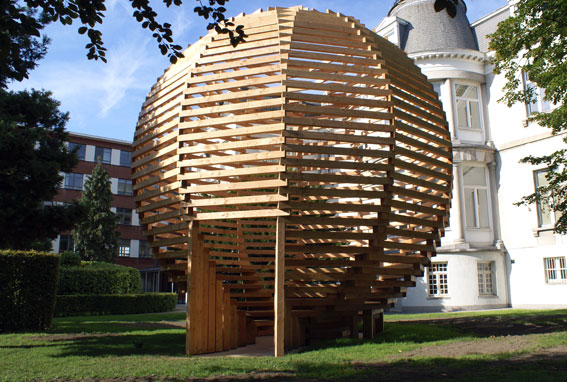 Untitled #151, Douglas Fir, 800cm x 800cm x 800cm, 2010
Untitled #151, Douglas Fir, 800cm x 800cm x 800cm, 2010
Andreas Wilder makes large sculptures by stacking lengths of timber. Many of these are temporary and as the projects end they are knocked down like dominoes.
More about Aeneas Wilder's work
sculpture
 Untitled #151, Douglas Fir, 800cm x 800cm x 800cm, 2010
Untitled #151, Douglas Fir, 800cm x 800cm x 800cm, 2010
Andreas Wilder makes large sculptures by stacking lengths of timber. Many of these are temporary and as the projects end they are knocked down like dominoes.
More about Aeneas Wilder's work
 Original pencil drawing on tracing paper. This was scanned and turned in a vector in Illustrator.
Original pencil drawing on tracing paper. This was scanned and turned in a vector in Illustrator.
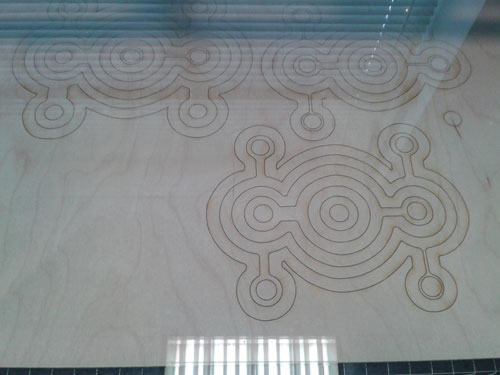 Pieces being cut from 4mm birch ply.
Pieces being cut from 4mm birch ply.
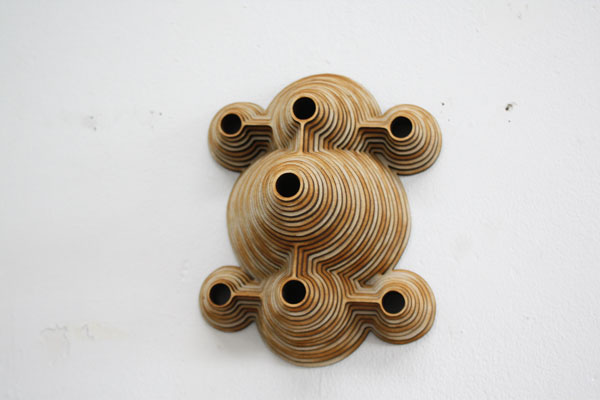 The sculpture as a wall mounted piece.
The sculpture as a wall mounted piece.
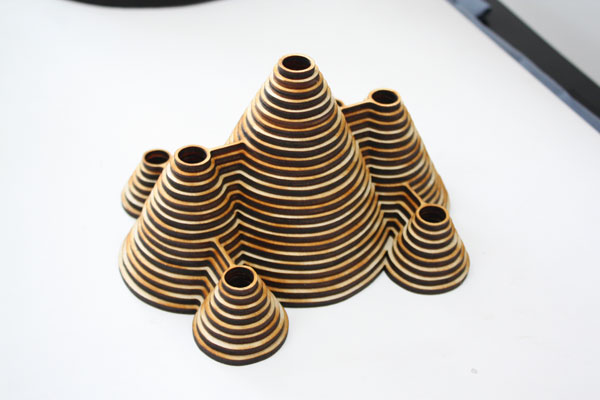
This turned out to be a stubborn piece of ply and required 3 passes of the laser to fully cut through. This resulted in more orange staining (caused by smoke) then would typically be the case, though I quite like the added variation in colouring.
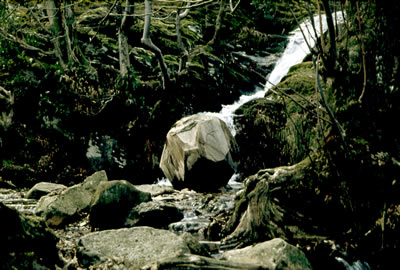
"He (David Nash) first carved a rough sphere... and intended to take this back to his studio. However, access was up a long steep track and at 400 kg and a metre wide, this 'boulder' was dangerous to move downhill. So instead Nash used a nearby stream, where rocky banks would contain the momentum of its descent.
However, a little way down the bank, the boulder became wedged in a waterfall. Nash had no option but to leave it there. It looked good in the streaming water, and so Nash began photographing it... the journey of Wooden Boulder had begun.
The following March heavy rainfall shifted Wooden Boulder into the pool below. Still with the intention of moving it to his studio, Nash hauled it out of the stream and rolled it down the next waterfall to the pool below, where it remained for eight years. It became obvious that the Wooden Boulder belonged to the stream; over the next 24 years it moved nine times during storms, eventually floating into the River Dwyryd estuary. Nash says of Wooden Boulder, 'It is important to the narrative of this "free-range"; sculpture that its material formed and grew on the hill over two centuries. I did not take the wood up the hill. The narrative, like the material, grew organically.'
Text quoted from the Kew Gardens website
Here is a video of Nash talking about Wooden Boulder and another work
As featured on boingboing
3118 coins
A retrospective of Boetti's work will be held at Tate Modern in early 2012.
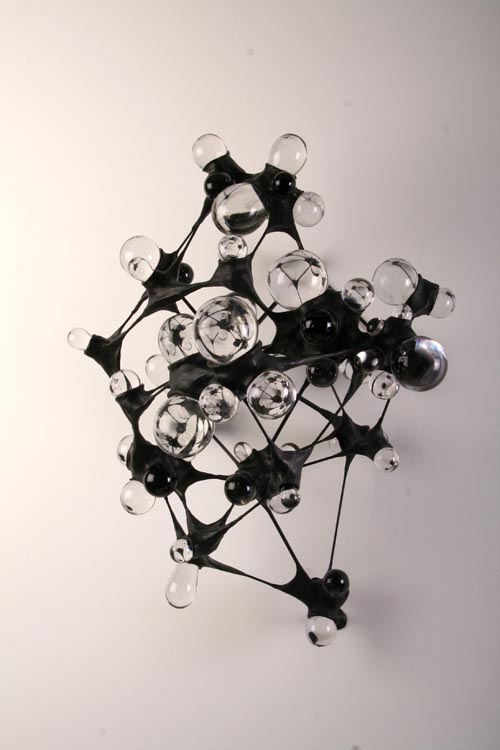 Graham Caldwell, Untitled (Lens Constellation), 2010, Glass, steel, epoxy
Graham Caldwell, Untitled (Lens Constellation), 2010, Glass, steel, epoxy
More of his work can be seen here
I posted a video of this sculpture at a n earlier stage in its production here . Today boingboing have featured this slicker video of the (almost) finished thing.
[photospace]
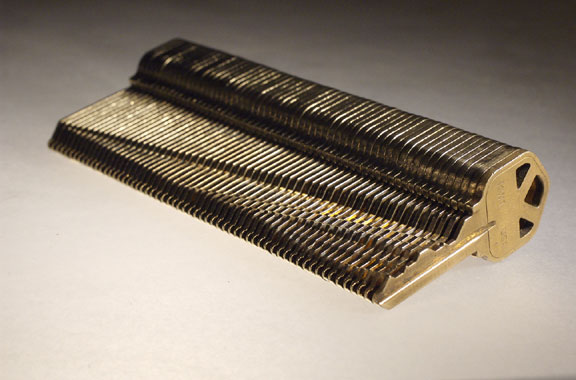 Daniel Bejar, The Visual Topography of a Generation Gap, brass keys, adhesive, 2006
Daniel Bejar, The Visual Topography of a Generation Gap, brass keys, adhesive, 2006
The artist explains:
A copy was made from my original apartment key, then a copy was made from that copy. This process was repeated until the original keys information was destroyed.